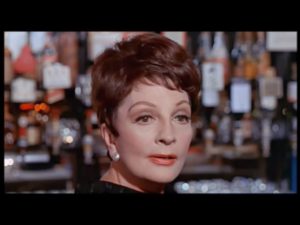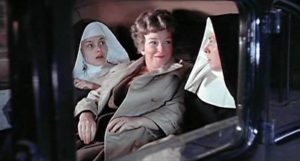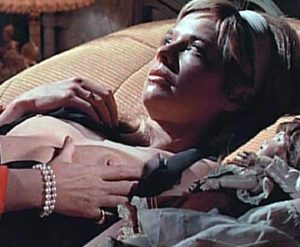A Look Back at Coral Browne and The Killing of Sister George
 Coral Browne (July 23, 1913-May 29, 1991) was an accomplished stage and screen actress. She was also actor Vincent Price’s third wife. She was a woman who enjoyed a varied and robust sexual life. Browne portrayed no-nonsense BBC-executive, Mercy Croft, in The Killing of Sister George, a film depicting a lesbian love-triangle. She is perfect as a smooth, predatory seductress—a role in which she had plenty of experience.
Coral Browne (July 23, 1913-May 29, 1991) was an accomplished stage and screen actress. She was also actor Vincent Price’s third wife. She was a woman who enjoyed a varied and robust sexual life. Browne portrayed no-nonsense BBC-executive, Mercy Croft, in The Killing of Sister George, a film depicting a lesbian love-triangle. She is perfect as a smooth, predatory seductress—a role in which she had plenty of experience.
Coral Browne converted to Catholicism shortly after World War II and remained a devout Catholic throughout her life. As a gift to her, Vincent Price converted to Catholicism. Her friend, Noel Davis, described the melding of her personality and faith: “I’m a Catholic of a sort, and I was always amused by her Catholicism because she was much more devout than fitted in with her obscenities. She never missed Mass on Sunday.” Existing the Brompton Oratory one Sunday morning, salty-tongued Browne was accosted by a theater friend with the latest gossip. She stopped him midsentence, exclaiming: “I don’t want to hear such filth, not with me standing here in a state of fucking grace.”
Browne did not get along with Vincent Price’s daughter, Victoria Price, but they both shared an interest in women. “Coral lent a sympathetic ear to my romantic troubles. Both were eager to meet anyone I brought home, though my stepmother rarely missed an opportunity to flirt outrageously with my girlfriends or to comment on their looks and style. One woman, she told me with a very knowing smile, “does it very well.” I took that as some kind of compliment.” Coral also told Victoria Price about a five-year relationship she had with a woman. Its dissolution was, according to Browne, the most heart-breaking moment of her life. 
In The Killing of Sister George (1968), BBC executive Mercy Croft (Coral Browne) is sent to chastise Sister George/June Buckridge (Beryl Reid) for a drunken incident involving two nuns. Buckridge is a middle-aged soap opera actress, and Alice “Childie” McNaught (Susannah York), her lover, has a minor fashion industry job, writes poetry and collects dolls. George/June is often verbally and physically abusive to Alice, and her treatment of her becomes worse as her character is scheduled to be eliminated on the popular show. The movie was given an “X” rating because of a two-minute masturbation scene between Coral Browne (Mercy Croft) and Susannah York (Alice “Childie” McNaught). The scene was panned as cold and unsexy—probably because they had most of their clothes on and didn’t writhe and moan continuously. But in 1968 it was revolutionary to see two mature women–McNaught was in her 30s and Croft was in her 50s–having sex to orgasm in a movie.
The movie was also history-making in that the director used a real lesbian bar for the lesbian club scene. Between June 9-16, 1968, The Killing of Sister George was shot at the Gateways, a lesbian club that operated in London between 1931 and 1985. Forty members were used as extras, one of whom lost her job when her employer recognized her in a publicity still. George and Alice go to an event at Gateways to which George jokingly invites Mrs. Croft. Mrs. Croft arrives to tell June in person that Sister George will die by being hit by a ten-ton lorry, eliminating her from the show. After June storms out, Mrs. Croft invites Alice to meet with her to further discuss her poetry. Alice has found a new lover/provider and June blew her chance with a woman she once desired and adored.
I wonder how Coral Browne reconciled the sexual and religious aspects of her life. She doesn’t strike me as a hypocrite and didn’t feel obligated to “leave” the Church. Browne died in 1991 without expressing a public opinion or statement; so we’ll never know her thoughts and feelings. The one aspect we do know is that she appeared to value monogamy while married. She had Vincent Price give up a male friend to whom he was strongly attached. That hurt Price deeply. It’s my one mark against Coral Browne.
How do you remain as lesbian and Catholic? My stance—perhaps Coral Browne’s—is to embrace the beautiful and positive in both and dismiss the negativity from secular skeptics and religious gatekeepers. The focus on what is most important – our relationship with God – can be difficult to achieve with all the worldly chatter and distractions; but over time we can sustain it through prayer, quiet time, meditation and the Eucharist.
Click here to see a trailer of The Killing of Sister George.
Click here to see a YouTube video of the Gateways club scene in the film.

